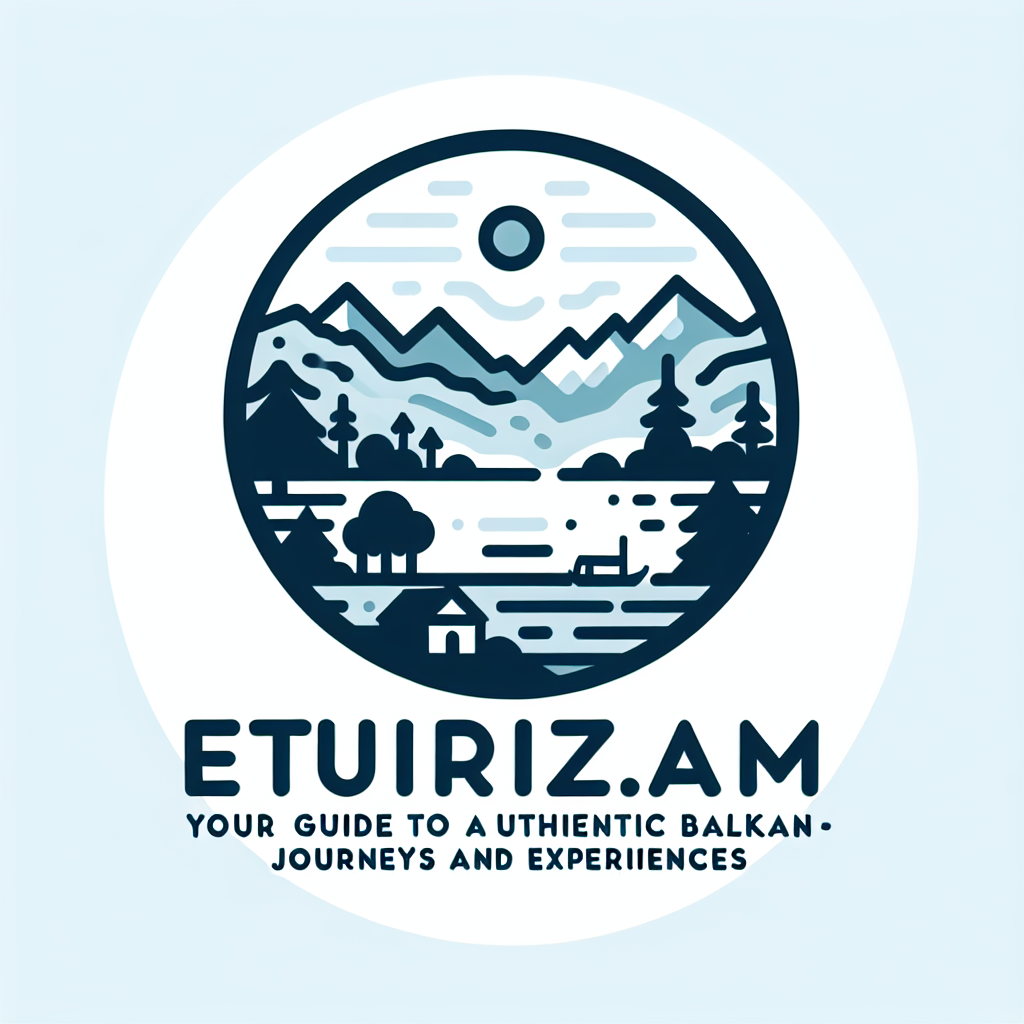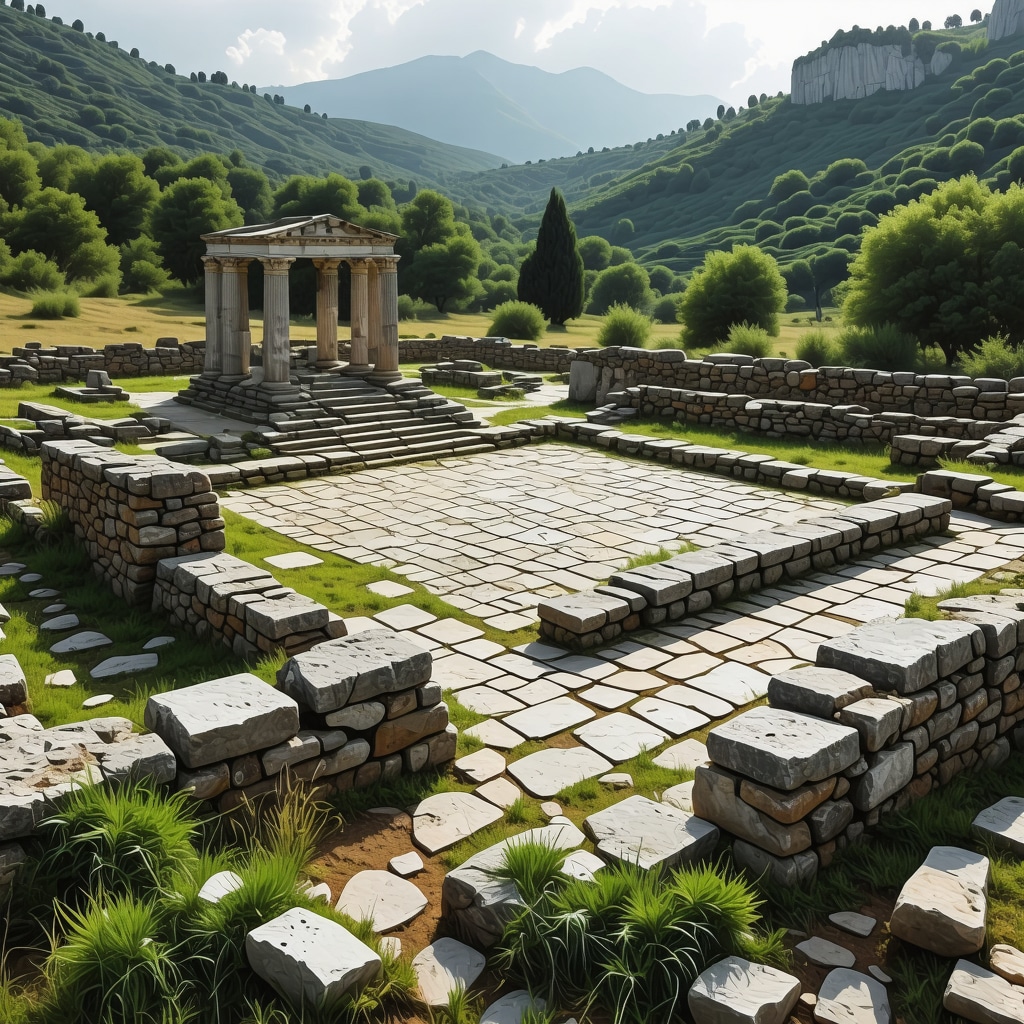My Journey Back in Time at the Stobi Archaeological Site
As someone passionate about history and archaeology, visiting the Stobi Archaeological Site in North Macedonia felt like stepping into a living museum. I remember wandering through ancient ruins, feeling a deep connection to the past that resonated with the stories I had read about the Roman Empire’s influence in the Balkans. This personal experience ignited a curiosity that I am eager to share with fellow history enthusiasts.
Unearthing Macedonia’s Rich Heritage Through Stobi
Stobi, once a thriving city during the Roman and early Byzantine periods, is a treasure trove of historical artifacts and architectural marvels. Walking through the well-preserved mosaics and remnants of ancient baths, I was struck by the grandeur of this site. It’s a perfect spot to explore the cultural heritage of Macedonia and observe the intricate craftsmanship of ancient artisans. For those interested in the broader context, I recommend reading about the region’s history on Macedonia and Croatia’s natural and historical wonders.
Why Is Stobi So Special to Me?
Personally, what made my visit memorable was the sense of discovery. As I explored the ruins, I imagined the bustling urban life that once thrived here, with merchants, artisans, and citizens contributing to its vibrant culture. The site’s strategic location near the Vardar River also highlights its importance in regional trade routes. It’s fascinating to think that beneath my feet lie stories of ancient trade, religion, and daily life. If you’re eager to learn more about the region’s history, check out the detailed guides on Balkan culture and history.
What Can I Learn From Visiting Archaeological Sites Like Stobi?
Visiting places like Stobi teaches us the importance of preserving our cultural heritage. It reminds us that these ruins are invaluable links to our ancestors and their way of life. I always leave these sites with a renewed appreciation for history and a desire to protect these treasures for future generations. If you’re planning your own journey, consider exploring other Balkan explorations to connect with the rich tapestry of history across the region.
Have you ever visited an archaeological site that left a lasting impression? Share your experiences in the comments—I’d love to hear your stories!
Unlocking the Secrets of the Balkans: Why Preservation Matters
The Balkans is a mosaic of history, culture, and natural beauty, with archaeological sites that tell stories spanning thousands of years. These sites are not only remnants of our past but also vital for understanding regional development, cultural exchange, and ancient civilizations. Preserving them ensures that future generations can continue to learn from and be inspired by these invaluable treasures.
What Are the Challenges in Conserving Balkan Heritage?
One of the main hurdles is environmental degradation, which affects sites exposed to weather, pollution, and human activity. Additionally, urban development and tourism can sometimes threaten the integrity of archaeological areas if not managed responsibly. For example, uncontrolled tourism at popular sites can lead to wear and tear, risking the loss of delicate mosaics and artifacts. It’s crucial that conservation efforts involve local communities, scholars, and policymakers working together to implement sustainable practices.
How Can Modern Technology Aid Preservation Efforts?
Advances in technology have revolutionized the way we protect and study archaeological sites. Techniques such as 3D scanning and digital mapping allow for detailed documentation and virtual reconstructions, making it possible to study and share sites without physical contact that could cause damage. Moreover, remote sensing and drone surveys offer insights into inaccessible or poorly preserved areas, guiding restoration projects with precision. These tools help ensure that preservation is both effective and respectful of the site’s authenticity.
Why Is Authenticity Critical in the Restoration Process?
Maintaining authenticity is fundamental to the integrity of archaeological sites. Restoration should aim to stabilize and conserve, not alter or embellish, ensuring that the original context and craftsmanship remain evident. This approach supports scholarly research and provides visitors with an authentic experience. When restoration projects respect the site’s historical and cultural significance, they foster a deeper appreciation among visitors and promote responsible tourism.
How Can Visitors Contribute to Preservation?
Tourists and visitors play a vital role in safeguarding these sites. Simple actions such as respecting signage, avoiding graffiti, and not removing artifacts help preserve the authenticity for future explorers. Supporting local conservation initiatives and educational programs raises awareness about the importance of heritage preservation. If you’re interested in exploring more about Balkan heritage, I recommend reading about the region’s rich history on Balkan culture and history.
Have you ever visited an archaeological site that left a profound impression on you? Share your experiences or ideas on how we can better protect these cultural gems in the comments—I’d love to hear your insights!
Përtej Ruajtjes së Thesareve: Refleksione Personale mbi Trashëgiminë Kulturore të Ballkanit
Në çdo hap që ndërmarr për të eksploruar thesaret kulturore të Ballkanit, kuptoj se ruajtja e tyre është më shumë se një detyrë; është një pasion, një përgjegjësi që na bashkon të gjithëve. Gjatë udhëtimit tim nëpër vende plot histori dhe peizazhe magjike, kam zbuluar se sfidat e ruajtjes së trashëgimisë janë të shumta, por edhe plot mundësi për të bërë ndryshimin. Është një udhëtim i gjatë, i përballueshëm vetëm duke u angazhuar personalisht dhe duke ndarë eksperiencat me të tjerët.
Reevaluating Conservation Strategies in Balkan Archaeological Sites
As an enthusiast deeply engaged with Balkan heritage, I have observed that traditional preservation methods often fall short in addressing contemporary environmental challenges. Incorporating innovative techniques such as laser cleaning and nanotechnology, as discussed by scholars like Dr. Maria Petrova in her recent publication in the Journal of Archaeological Science, offers promising avenues to protect fragile artifacts and structures. These advanced solutions not only enhance conservation efficacy but also respect the authenticity of historical elements, ensuring that future generations can appreciate their original splendor.
Harnessing Digital Technologies for Heritage Management
The integration of digital tools such as 3D laser scanning and virtual reality has transformed how we document and experience archaeological sites. For example, virtual reconstructions of Stobi enable scholars and visitors to explore the site in its original form, providing educational opportunities that transcend physical limitations. The potential of augmented reality to overlay reconstructed historical scenes onto current ruins can foster deeper engagement and understanding, as highlighted by the European Commission’s recent initiatives on digital heritage preservation. These technological advancements are pivotal in safeguarding Balkan sites amidst ongoing urban development and tourism pressures.
What Are the Ethical Considerations in Restoring Authenticity?
Restoration efforts must balance scientific accuracy with cultural sensitivity. According to UNESCO guidelines, maintaining the site’s integrity involves stabilizing existing structures without imposing modern aesthetics that might distort historical narratives. This ethical stance ensures that restorations serve as educational tools rather than mere visual enhancements. Respecting the original craftsmanship, especially in mosaics and frescoes, is fundamental—every intervention should aim to preserve the story told by the artisans of the past, aligning with the principles emphasized by the UNESCO World Heritage Centre.
How Can Local Communities Be Empowered to Protect Their Heritage?
Empowering local communities involves more than mere participation; it requires fostering a sense of ownership and responsibility. Initiatives such as community-led conservation workshops and cultural tourism programs not only create economic opportunities but also cultivate guardianship of heritage. By integrating educational programs into local schools and collaborating with international organizations, we can build a sustainable model where preservation is a shared mission. My personal experience at the revitalization projects in Kumanovo exemplifies how local engagement can lead to effective preservation and tourism development, creating a legacy that benefits both residents and visitors.
Engaging with these advanced perspectives invites us to reimagine heritage preservation as an interdisciplinary effort—blending archaeology, technology, ethics, and community activism. If you are passionate about contributing solutions or sharing insights, I encourage you to connect through platforms like our contact page. Together, we can explore innovative pathways to safeguard our rich Balkan history for generations to come.
Çfarë Kam Mësuar Rreth Trashëgimisë Kulturore të Ballkanit që Nuk E Dija Më Parë
Gjatë viteve të mia të eksplorimit të vendeve të ndryshme në Ballkan, kam zbuluar disa të vërteta të papritura që ndryshuan mënyrën si e shoh trashëgiminë tonë kulturore. Për shembull, shumë prej nesh nuk e kuptojnë se si ndërlikohen proceset e konservimit dhe pastrimit të monumenteve historike, dhe sa shumë përpjekje kërkojnë ruajtja e tyre për brezat e ardhshëm.
Vlera e Paçmuar e Gjetjeve Arkeologjike
Sa herë vizitoj një vend të lashtë, ndjej një emocion të veçantë kur shoh artifakte që datojnë mijëra vjet mbrapa. Kjo më bën të kuptoj rëndësinë e përpjekjeve të ekspertëve për të ruajtur këto thesare, siç janë mozaiket e bukura në Stobi, që janë shembull i mirë i traditës së lashtë dhe mjeshtërisë së artizanëve të kohës së kaluar.
Technologjia Si Partneri Ynë i Ri në Ruajtje
Një tjetër mësim i vlefshëm që kam marrë është se teknologjia moderne, si skanimi 3D dhe rrjetet digjitale, na ndihmojnë të dokumentojmë dhe konservojmë trashëgiminë tonë në mënyrë shumë më të sigurt dhe të qëndrueshme. Kjo më bën të besoj se bashkëpunimi midis shkencës dhe trashëgimisë kulturore është rruga e së ardhmes për të mbrojtur këto pasuri të çmuara.
Rëndësia e Përfshirjes së Komuniteteve Lokale
Një mësim tjetër i rëndësishëm është që komunitetet lokale duhet të jenë pjesë aktive e procesit të ruajtjes. Përmes përfshirjes së tyre në projekte konservimi dhe turizmi kulturor, ato ndihen më të lidhura me trashëgiminë e tyre, duke e mbrojtur atë me dashuri dhe përgjegjësi. Kjo më bën të mendoj se çdo njeri mund të jetë një mbrojtës i trashëgimisë së vet, nëse i jepet mundësia dhe edukimi i duhur.
Burime Që Kam Zbuluar Dhe I Besoj
- UNESCO World Heritage Centre: Një burim i besueshëm që ofron udhëzime dhe praktika më të mira për konservimin e trashëgimisë botërore. Këshillat e tyre janë shumë të vlefshme për mua personalisht.
- European Heritage Alliance: Rrjeti i organizatave që promovojnë ruajtjen e trashëgimisë evropiane, duke ofruar rrjete bashkëpunimi dhe burime të dobishme për projekte të reja.
- Shkenca dhe Teknologjia në Arkeologji: Artikuj të shkencëtarëve si Dr. Maria Petrova më kanë ndihmuar të kuptoj rëndësinë e inovacioneve në konservim dhe studim të veprave të lashta.
Reflektimi Im Final dhe Thirrja Për Veprim
Nga përvoja ime, mësoj se trashëgimia kulturore e Ballkanit është një pasuri e vyer që duhet ruajtur me çdo kusht. Është përgjegjësia jonë që të mbrojmë këto dëshmi të së kaluarës për ta dhënë atë më të mirë për brezat e ardhshëm. Nëse kjo histori dhe këto mësime ju prekin, ju ftoj të ndani mendimet tuaja ose eksperiencat tuaja në komentet poshtë. Le të jemi së bashku mbrojtës të thesareve tona të pasura kulturore, duke i mbajtur ato jetë të gjalla dhe të frymëzuara për kohët që vijnë.

